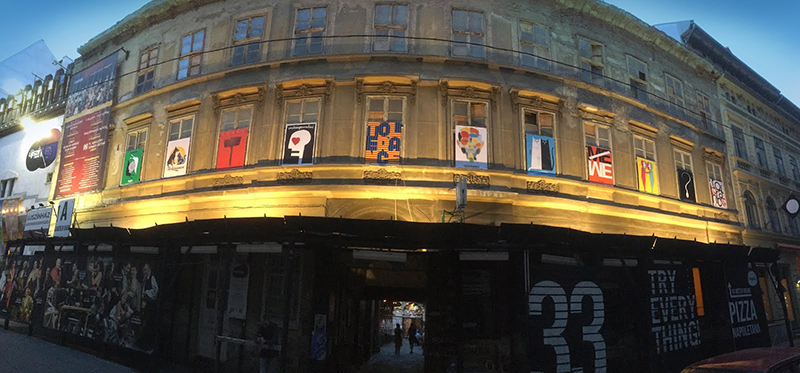
Ankert, Budapest, Hungary
Note: THE TOLERANCE PROJECT is a traveling poster collection that celebrates and honors the starting point of all meaningful discourse: tolerance. Free, flexible, and ever-expanding, THE TOLERANCE PROJECT has brought a message of social acceptance to more than 100,000 people in twenty-four countries worldwide. Artists from each nation are asked only to illustrate the word “tolerance” in their native language. The posters appear in public spaces—in parks, on university campuses, even on buses—thus engaging with a wide cross-section of the population. It’s all part of starting a conversation about inclusion, which can only begin with a foundation of tolerance—and spreading respect in a world increasingly split by race, religion, sexuality, and national origin.
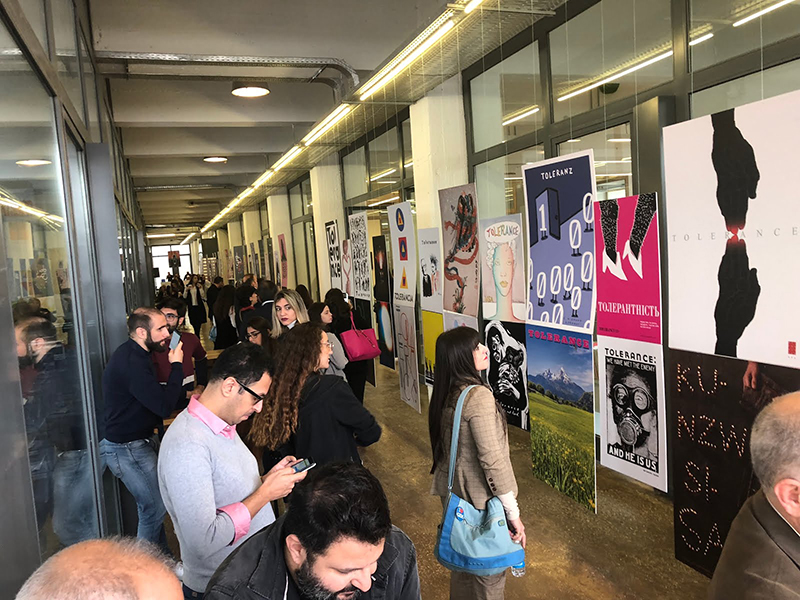
Bierut, Lebanon
Four years ago Mirko Ilic, a Serbo-Croatian-born, New York-based designer and illustrator, made graphic design for the film festival at the House of Tolerance in Ljubljana, Slovenia, including an identity, logo, and posters as part of a fundraising effort. To show appreciation for his work, after a year and half, the organizers offered Ilic a small square next to the festival with thirty poster spaces to show his work.
“I didn’t think that it was appropriate to abuse my position and use this occasion to promote myself,” he told me. So, in thinking about how to fill that space, he invited twenty-one internationally prominent artists, illustrators and designers to create posters on the theme of tolerance. The only instructions were the size of the poster, they had to write the word “tolerance” in their language, and to sign with their country of origin. “Less than four weeks later, I received all twenty-one posters” plus two for a title and introduction. Two and half years later the exhibit comprises 133 posters with more on the way.
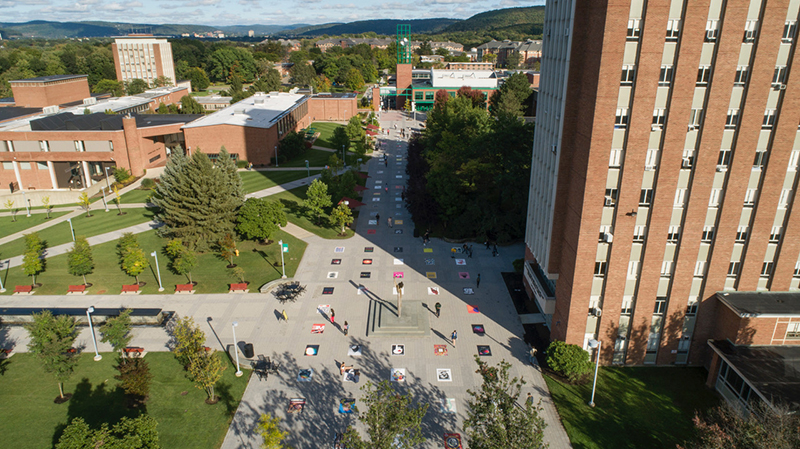
Binghamton, New York, USA
The problem with posters is ephemerality; one or two might over time have long term impact, but most are buried under mounds of visual clutter. Ilic understands that no poster or any other creative activity can satisfy everyone. “If one walks through the Tolerance Poster show and if only one of the 133 posters that I have so far touches their heart, then the show has succeeded,” he says.
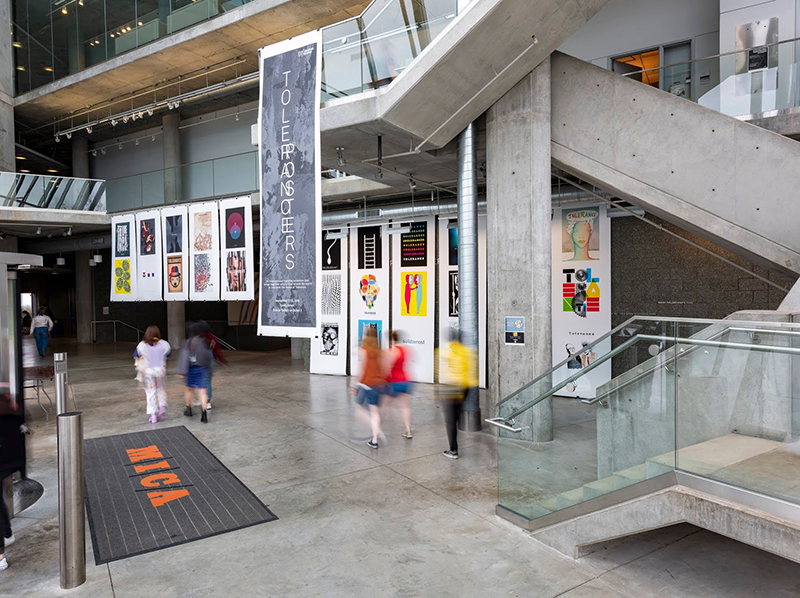
MICA, Baltimore, Maryland, USA
Originally, the show in Ljubljana was to be a one-off yet seeing how beautiful and powerful the posters mounted in the square “I became aware that only showing them there would be a huge waste of the talent,” he admits. What’s more, the sense of the show’s importance was reinforced the morning before it opened. Overnight, somebody destroyed one of the posters because it was in Arabic and a few days later a few more posters were defaced. “It seems like certain people have a very strong reaction to tolerance,” Ilic recalls. “This was proof of a lack of tolerance. But also a self-incentive to continue the show.”

Dubai, UAE
It is a novel model to keep adding to a traveling show. How Ilic goes about refreshing the offerings is to invite artists from the city where it is displayed. “People cannot invite themselves, although some do try,” he says. There are two ways he goes about inviting people. “Whenever I am preparing for an upcoming show, I invite the most prominent or interesting artist or designer form the country where the show is to be held. That way I can have an artist with a local voice with local concerns with their own view on tolerance.” Then whenever he identifies an artist that could produce something new and interesting, they too are invited.

Ukraine
Drawing on his extensive rolodex, having been art director of Time magazine’s International Edition, the New York Times OpEd page and organizing exhibits on other international themes, the core group included a United Nations of artists and designers: Hamzah Abdelal — United Arab Emirates, Reza Abedini — Iran, Tarek Atrissi — Lebanon, Peter Bankov — Russia; Michel Bouvet — France; Sue Coe — England/United States; Manuel Estrada — Spain; Milton Glaser — United States; Jianping He — China; Fons Hickmann — Germany; Anette Lenz — France; Mwalimu Saki Mafundikwa — Zimbabwe; Alejandro Magallanes — Mexico; Chaz Maviyane-Davies — Zimbabwe; New Collectivism — Slovenia; Istvan Orosz — Hungary; Paula Scher — United States; Yuko Shimizu — Japan; Sarp Sozdinler — Turkey; Felipe Taborda — Brazil; David Tartkover — Israel. Now there are 133 posters from 7 continents and 54 exhibitions in 24. Not everyone asked agreed, however, a few wanted to be paid. No one is paid and the venues that take the show (which is distributed as digital downloadable as high-resolution files on the internet) must find funds for making the physical artifacts and finding the venues.
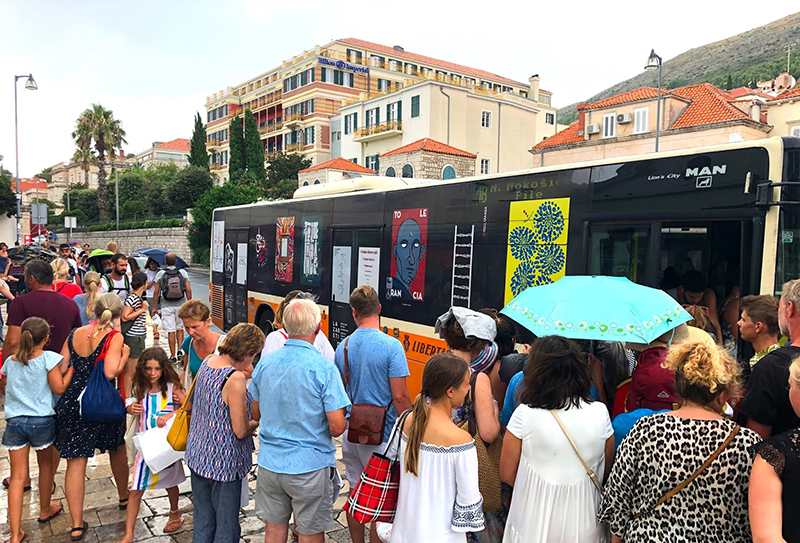
Dubrovnik, Croatia
In fact, a requirement of getting the show is that one part, if not all the posters, be shown in a public space where everyday people can see them. “I am always desperately trying to avoid galleries and the label of a design show because those kinds of shows mostly attract the usual suspects, people who already attended design shows and galleries,” Ilic insists. Since most of the shows are in public places, every show is aimed towards the space and financial possibilities of whoever is hosting the exhibition. In Konstantinova, Ukraine, which was organized by local activists with no money, everything was printed on the only available printer that could print at tabloid size. A couple months before in Ljubljana, Slovenia, the same posters were printed billboard size (because the show at that time was sponsored by a billboard company). A couple months ago, the same posters appeared as a wrap on the Dubrovnik city transportation city buses, because the show was sponsored by the city of Dubrovnik, Croatia. “None of this can be planned ahead. The moment the show is agreed upon, the organizers look for the most effective way to display posters.” Sometimes they are not only printed but they will also be digitally projected like in Salt Lake City, Utah, Dubrovnik, Croatia, and projections indoors in Jakarta, Indonesia.
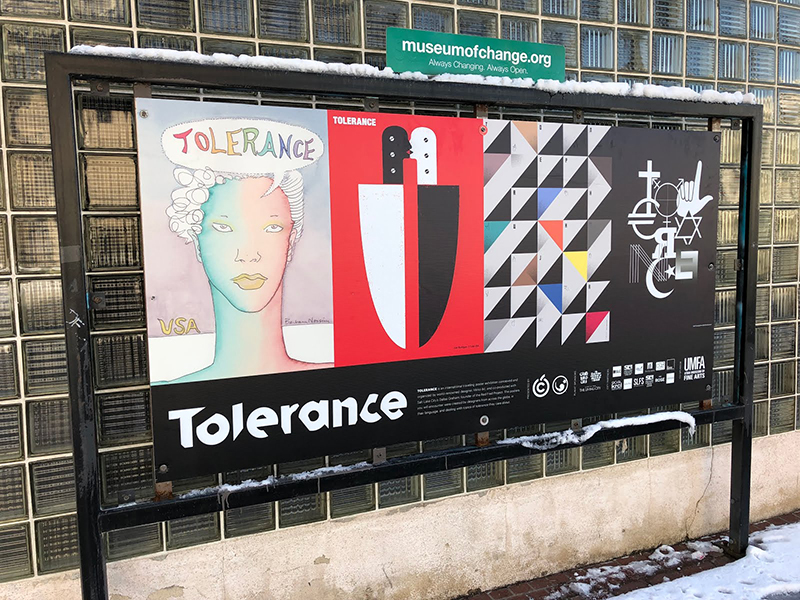
Salt Lake City, Utah, USA
It is not always smooth sailing, including censorship has occurred, and Ilic is reconciled to the problems. “There are many aspects of why people will have an objection,” he explains. “Some are legitimate,” including two posters in the show representing a swastika (Herms Fritz and Alex Jordan) and there are a few countries in Europe that have a law forbidding the public display of even the non-Nazi versions of the symbol. In some countries the public display of nudity, even when it is a statue (Leonardo Sonnoli), (Jose Albergaria), is also illegal. “But, some things I cannot understand very easily,” he questions. “I had a case where the potential exhibitor in Kuwait wanted to display only 40 posters from the one hundred we had at the time because the other sixty were ‘inappropriate.’ They didn’t want a poster with people dancing, because public dancing is illegal (Niklaus Troxler) or a poster with knives kissing, because it was ‘too sexual’ to show (Edel Rodriguez). Under those conditions, we could not have a show.”
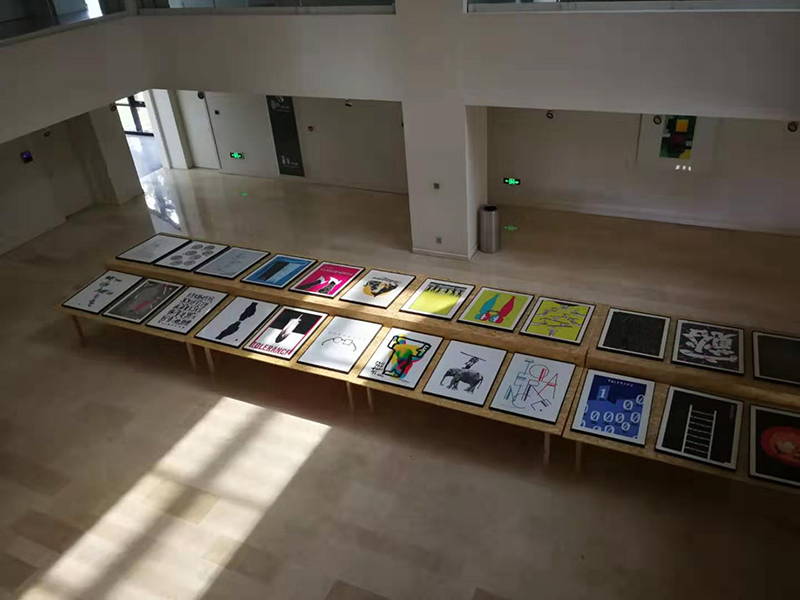
Xi'an Eurasia University, China
But the strangest objection to the show happened in the United States — objecting to the title of the show. “Tolerance,” they insisted is a negative title, and it makes the show negative. “I lost a grant opportunity from Sappi ‘Ideas that Matter’ when a juror refused to give the project a grant. . . and suggested that the show needed to be called ‘Inclusion’ instead of ‘Tolerance’”. I received the same comment from multiple places but only here in the United States. Obviously we have some misunderstanding here.” To date no grants have been forthcoming.
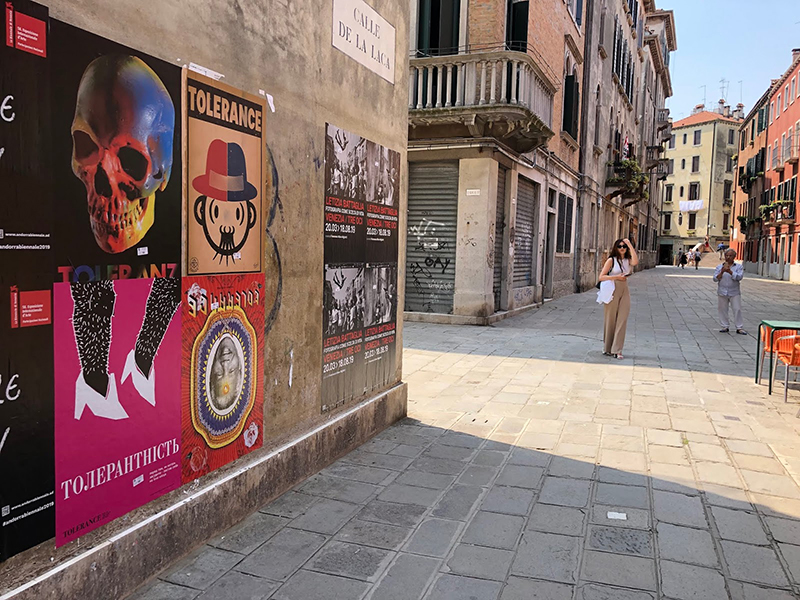
Venice, Italy
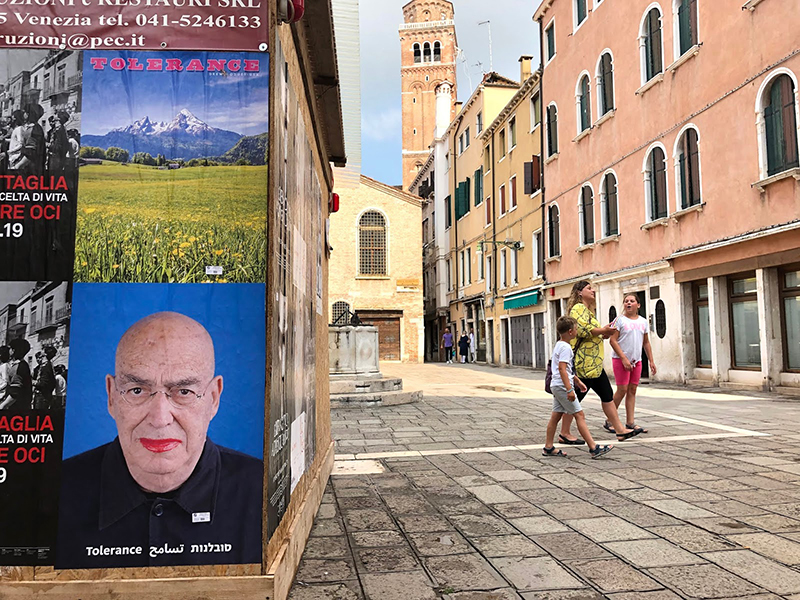
Venice, Italy
And this is a major problem. “Tolerance” is an international show, in most countries around the world people understand the meaning of the word “Tolerance.” Ilic insists the word “Inclusion” does not reach a broad range of languages. In some of the countries which they had the show or wanted to have the show, even tolerance is a lot to ask. “Gay people get harassed and beat up, they could even be jailed. Females, for one reason or another are constantly harassed. Not to mention the harassment that people of ethnic and religious minorities are going through. For most of them, tolerance is what they desire. We must first achieve tolerance to even talk about inclusion. By the way, even the United Nations declared November 16th as The International Day of Tolerance.”
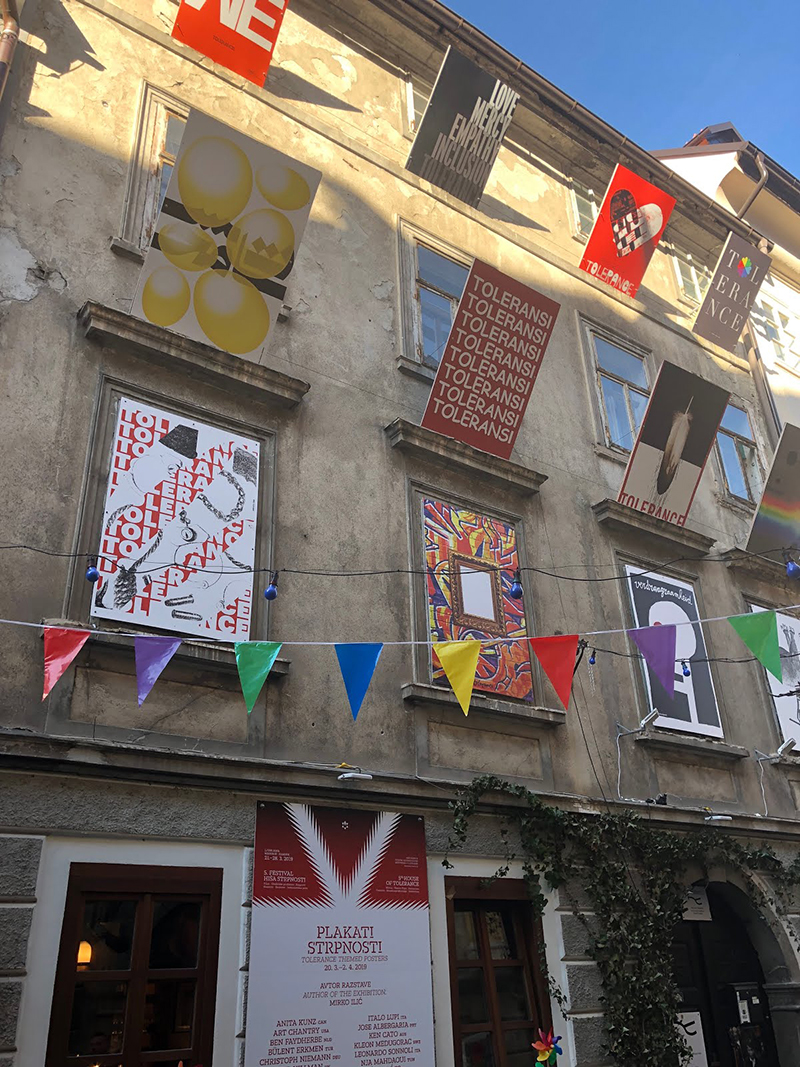
Lublijana, Solvenia
For the last two and half years, all of the preparation work done for the Tolerance Poster show has been financed by Ilic alone. Most available grants cater to artists or to non-profit organizations, which means Ilic became a non-profit “Tolerance Project Inc.” Ilic’s goal is simple; use posters to raise awareness and grow the conversation. “If tolerance succeeds,” he says, “I won’t need to produce more shows around the world anymore. Then, maybe I need to work on shows of ‘inclusion’ ?”

